Discover 35 hidden attractions, cool sights, and unusual things to do in Richmond (United States). Don't miss out on these must-see attractions: Virginia Museum of Fine Arts, Maymont, and Virginia State Capitol. Also, be sure to include Agecroft Hall in your itinerary.
Below, you can find the list of the most amazing places you should visit in Richmond (Virginia).
Table of Contents
Virginia Museum of Fine Arts
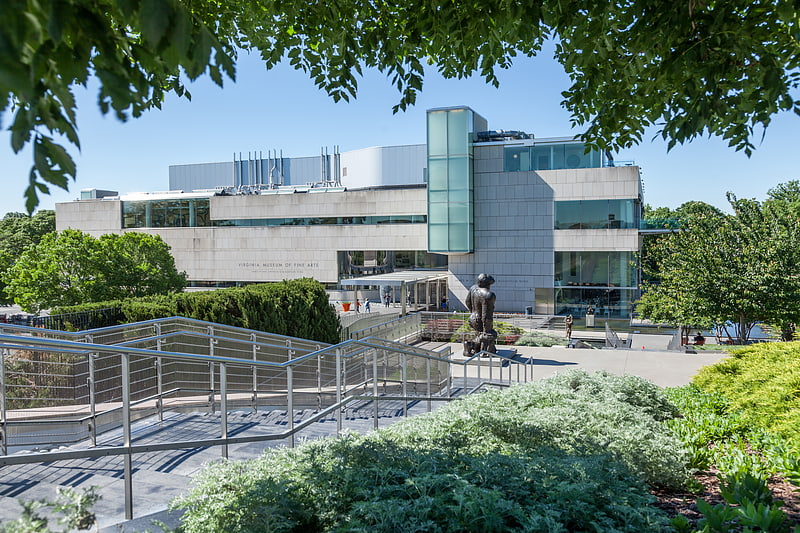
Art museum in Richmond, Virginia. The Virginia Museum of Fine Arts, or VMFA, is an art museum in Richmond, Virginia, United States, which opened in 1936. The museum is owned and operated by the Commonwealth of Virginia. Private donations, endowments, and funds are used for the support of specific programs and all acquisition of artwork, as well as additional general support.
Considered among the largest art museums in North America for square footage of exhibition space, the VMFA's comprehensive art collection includes African art, American art, British sporting art, Fabergé, and Himalayan art. One of the first museums in the American South to be operated by state funds, VMFA offers free admission, except for special exhibits.
The Virginia Museum of Fine Arts, together with the adjacent Virginia Historical Society, anchors the eponymous "Museum District" of Richmond, and area of the city known as "West of the Boulevard".
The museum includes the Leslie Cheek Theater, a performing arts venue. For 50 years there was a theater company operating here, known most recently as TheatreVirginia. Built in 1955 as a 500-seat theatre within the art museum, it started as a community theater and also hosted special programs in dance, film, and music. In 1969 the director established an Actors' Equity/LORT company known as Virginia Museum Theatre, hiring both local actors and professionals from New York City or elsewhere. Some of its productions received national notice. In 1973 its production of Maxim Gorky's play Our Father transferred to New York, to the Manhattan Theater Club. Because of continuing financial problems, the non-profit theater closed in 2002. After renovation, it reopened in 2011 as part of the museum to host a range of live performance events.[1]
Address: 200 N Boulevard, 23220 Richmond (Carytown - Museum District)
Maymont
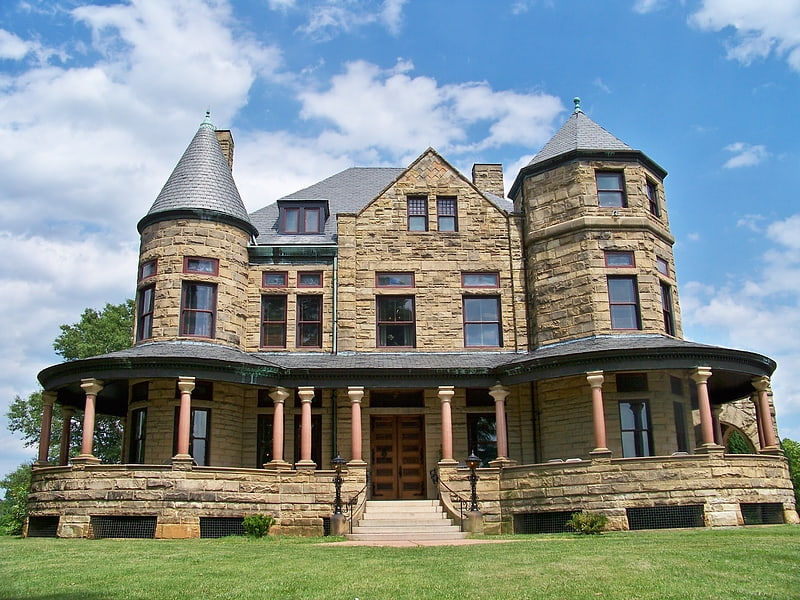
Museum in Richmond, Virginia. Maymont is a 100-acre Victorian estate and public park in Richmond, Virginia. It contains Maymont Mansion, now a historic house museum, an arboretum, formal gardens, a carriage collection, native wildlife exhibits, a nature center, and Children's Farm.
In 1893, James H. Dooley, a wealthy Richmond lawyer and philanthropist, and his wife, Sallie, completed their elaborate Gilded Age estate on a site high above the James River. According to their wishes, after their deaths Maymont was left to the people of Richmond. Over the next 75 years, additional attractions were added.[2]
Address: 800 Swan Lake Dr, 23220 Richmond (Fan - Oregon Hill - Carver)
Virginia State Capitol
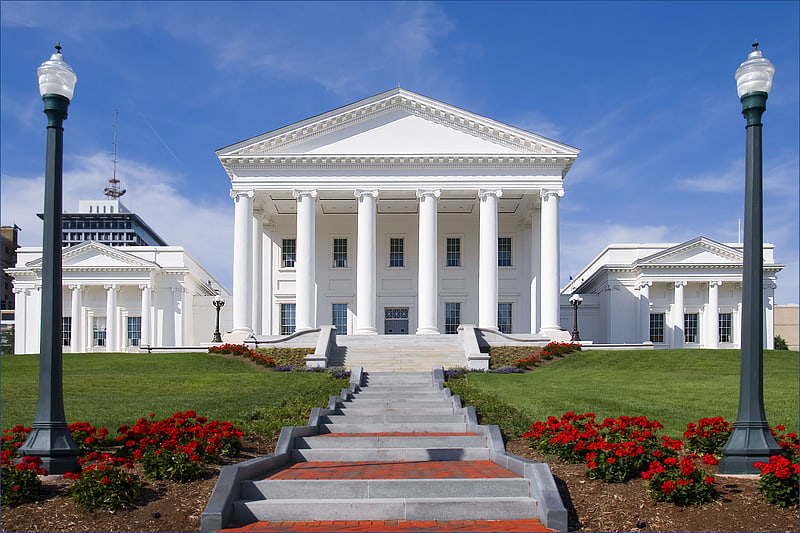
Colonial-style government landmark. The Virginia State Capitol is the seat of state government of the Commonwealth of Virginia, located in Richmond, the third capital city of the U.S. state of Virginia. It houses the oldest elected legislative body in North America, the Virginia General Assembly, first established as the House of Burgesses in 1619.
The Capitol was conceived of by Thomas Jefferson and Charles-Louis Clérisseau in France, based on the Maison Carrée in Nîmes. Construction began in 1785 and was completed in 1788. The current Capitol is the eighth built to serve as Virginia's statehouse, primarily due to fires during the Colonial period. In the early 20th century, two wings were added, leading to its present appearance. In 1960, it was designated a National Historic Landmark.[3]
Address: 1234 Bank St, 23219 Richmond (Downtown Richmond)
Agecroft Hall

Building in Richmond, Virginia. Agecroft Hall is a Tudor manor house and estate located at 4305 Sulgrave Road on the James River in the Windsor Farms neighborhood of Richmond, Virginia, United States. The manor house was built in the late 15th century, and was originally located in the Irwell Valley at Agecroft, Pendlebury, then in the historic county of Lancashire, England, but by the 20th century it was unoccupied and in a state of disrepair.
Mr. Thomas C. Williams, Jr. of Richmond, Virginia, a wealthy entrepreneur, purchased Agecroft Hall upon the advice of his architect, Henry G. Morse. During the Country Place Era, when many wealthy American families were building extensive country estates emulating those they had seen in Europe, Mr. Williams, whose business interests included tobacco, banking and shipping wished to build a true English manor house on his 23-acre estate overlooking the James River. The manor house was dismantled, crated, transported across the Atlantic, and reconstructed in Richmond's Windsor Farms neighborhood - then a fashionable new neighborhood being developed by Mr. Williams on the Williams' family farm site, which had long been known as 'Windsor.'
The architect, Mr. Morse, was retained to oversee the reconstruction. The intention was not to replicate Agecroft as it had stood in Lancashire, but rather to create a functional and comfortable mansion reminiscent of its English predecessor. The original floor plan was abandoned and many 20th century conveniences were included. Reconstruction took two years and cost approximately $250,000, a considerable sum for that time. The project was completed during the spring of 1928.
The following year Mr. Williams died, having stipulated in his will that upon his widow's death or relocation, Agecroft Hall would become a house museum.[4]
Address: 4305 Sulgrave Rd, 23221-3256 Richmond (Near West End)
J. E. B. Stuart Monument
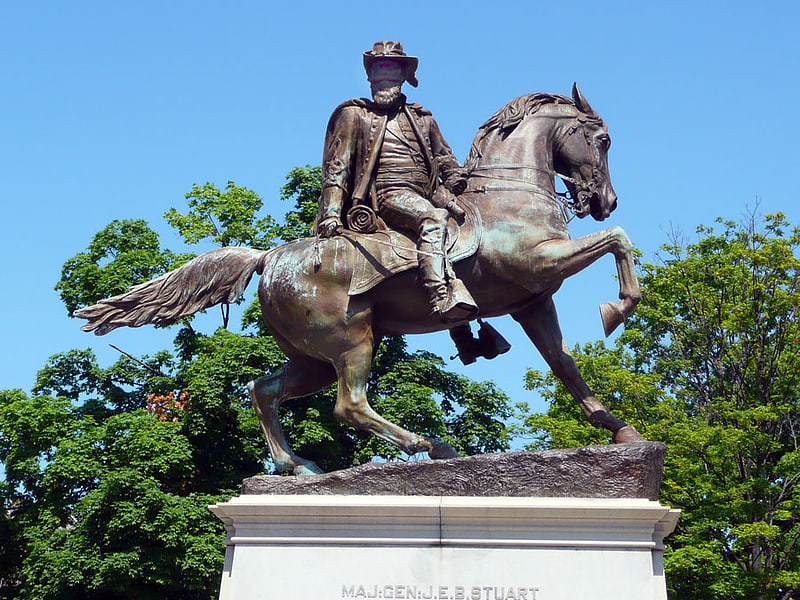
Statue by Frederick Moynihan. The J. E. B. Stuart Monument is a partially deconstructed monument to Confederate general J. E. B. Stuart at the head of historic Monument Avenue in Richmond, Virginia, which was dedicated in 1907. Currently an empty granite pedestal, the equestrian statue of General Stuart was removed from its pedestal and placed into storage on July 7, 2020 after having stood there for 113 years. The removal was in response to nationally reported events of police brutality and a corresponding emergency declaration in Virginia.[5]
Address: Monument Ave, 23220 Richmond (Fan - Oregon Hill - Carver)
Lewis Ginter Botanical Garden
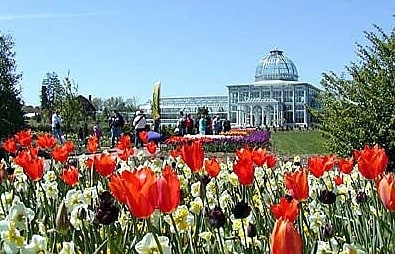
Botanical garden in the Lakeside, Virginia. Lewis Ginter Botanical Garden is a 50 acres, botanical garden in Henrico County, just outside of Richmond, Virginia. It features over a dozen themed gardens, a conservatory, library, and café. Regular daily admission is $17 for adults, $14 for seniors, $8 for children, under age 3 are free. Lewis Ginter Botanical Garden is part of the Museums for All program offering $1 adult admission and $5 annual membership to those with a SNAP/EBT card. Lewis Ginter Botanical Garden also hosts select days, typically July 4 and Labor Day, where admission is free to the community. Lewis Ginter Botanical Garden offers an indoor butterfly exhibit Butterflies LIVE!, seasonal exhibitions, art exhibitions, special events and seasonal evening hours with live music. Leashed dogs are permitted on select Thursday evenings for Fidos After 5. Tours, classes and select special events typically have an additional fee.[6]
Address: 1800 Lakeside Ave, 23228 Richmond
Belle Isle
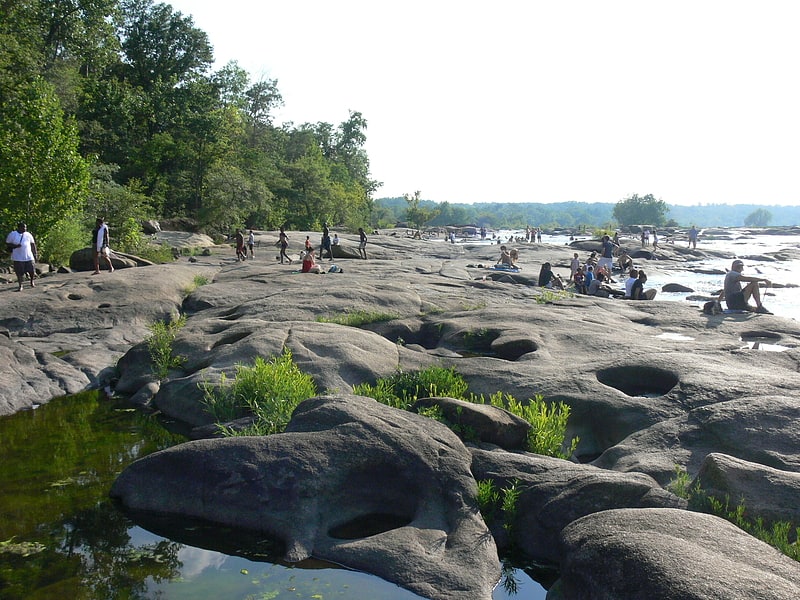
Island in Richmond, Virginia. Belle Isle is a small 54-acre island in the city of Richmond, Virginia. Belle Island lies within the James River, and being owned by the city it serves as a city park. It is accessible to pedestrian and bicycle traffic via a suspension footbridge that runs under the Robert E. Lee Memorial Bridge from the northern shore or via a wooden bridge from the southern shore. Except when the water level of the James is high, it is also reachable by foot from the southern shore via easy boulder-hopping. From Belle Isle, one can see Hollywood Cemetery, the old Tredegar Iron Works, and Richmond City's skyline. Belle Isle has many bike trails around the island, and has a small cliff used for rock climbing instruction.[7]
Address: 300 Tredegar St, 23219 Richmond
Cathedral of the Sacred Heart
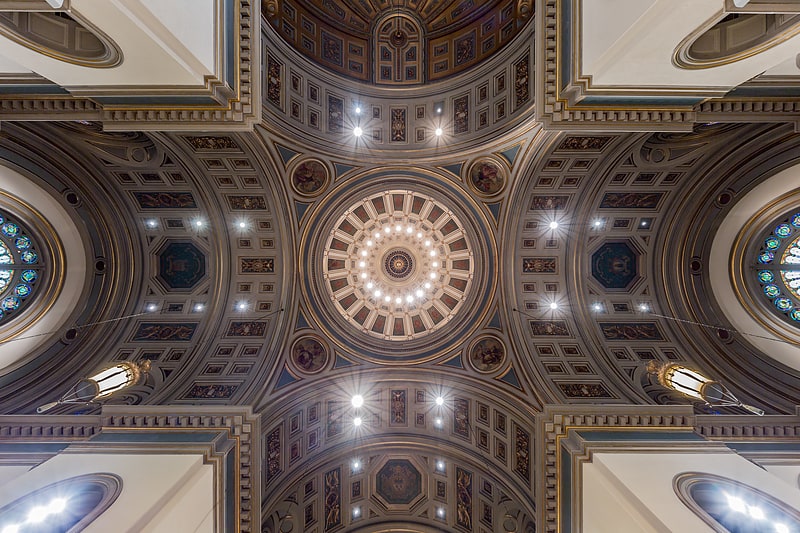
Catholic cathedral in Richmond, Virginia. The Cathedral of the Sacred Heart in Richmond, Virginia, is the seat of the Roman Catholic Diocese of Richmond. The property is located along North Laurel Street at 823 Cathedral Place, facing Monroe Park one block north of Main Street. Construction of the cathedral was begun in 1903, financed by donations of Thomas Fortune Ryan and his wife; it was the only cathedral at that time known to be constructed by the exclusive patronage of a single family.
The cathedral was completed in 1905 and consecrated on Thanksgiving Day, November 29, 1906. The cathedral is a Virginia Historic Landmark and is on the National Register of Historic Places.
The Cathedral of the Sacred Heart hosts the Catholic Campus Ministry for Virginia Commonwealth University.[8]
Address: 823 Cathedral Pl, 23220 Richmond (Fan - Oregon Hill - Carver)
The Diamond
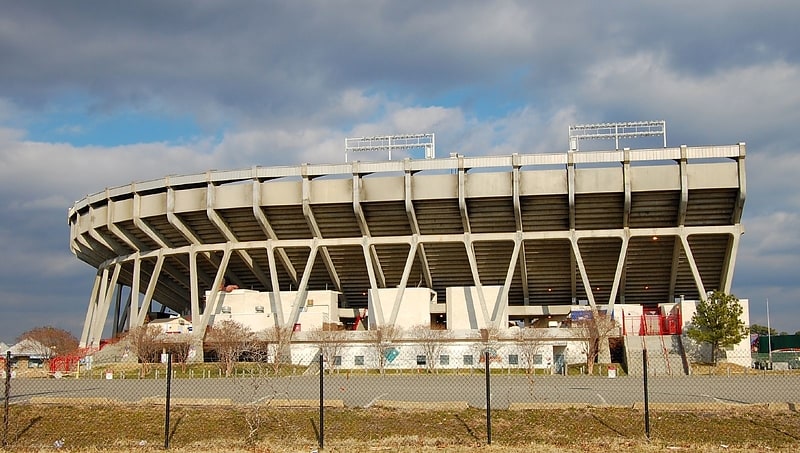
Stadium in Richmond, Virginia. The Diamond is a baseball stadium located in Richmond, Virginia, USA, on Arthur Ashe Boulevard. It is the home of Richmond Flying Squirrels of the Double-A Northeast and the Virginia Commonwealth University baseball team. From 1985 to 2008, it was the home of the Richmond Braves, the Triple-A minor league baseball affiliate of the Atlanta Braves. The Diamond seats 12,134 people for baseball; however, for Flying Squirrels games, advertising banners cover up the top rows of the upper deck, reducing seating capacity to 9,560.[9]
Address: 3001 N Boulevard, 23230-4331 Richmond (Carytown - Museum District)
Texas Beach Skate Park
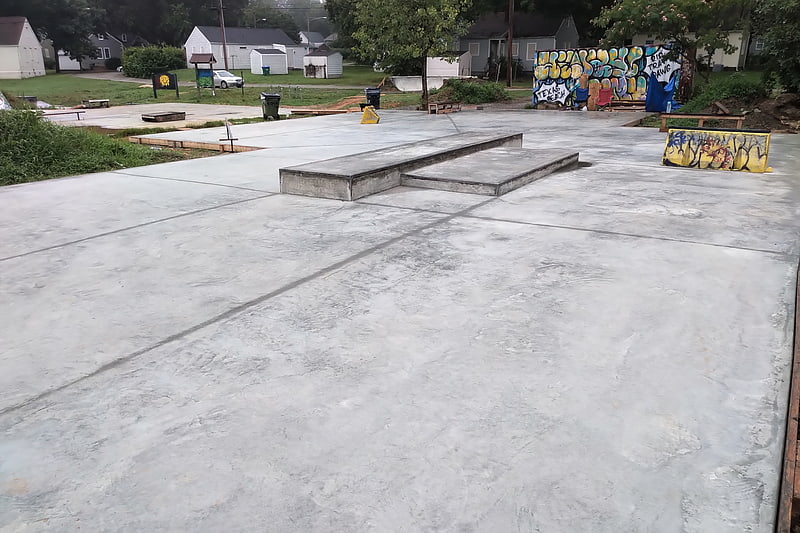
Texas Beach Skate Park, also known as Treasure Island Community Skate Park, is a DIY skatepark located within the planned Riverview Community Park in the Texas Beach riverside area on the north bank of the James River in Richmond, Virginia, United States.
Under ongoing construction and expansion by a group of local-area skateboarders and volunteers, with additional support and organizational assistance from the Richmond Area Skateboard Alliance (RASA), the skatepark comprises two separate concrete slabs, the older lower level consisting of the original Texas Beach DIY skate spot, and the newer upper level poured in 2019. With ongoing development sanctioned by the City of Richmond, but without direct financial support from the Richmond Department of Parks, Recreation, and Community Facilities, construction and expansion of the skatepark continue to be undertaken purely by the efforts of local skateboarders and volunteers with donated concrete, coping, and other materials.
Texas Beach Skate Park is the second public skatepark in the City of Richmond, and the first and only public skatepark in the City north of the river. In contrast to Carter Jones Skate Park, the city’s first public skatepark on southside and the only one officially opened and formally dedicated by the city, the skate park has a strong volunteer culture and DIY vibe.[10]
Forest Hill Park
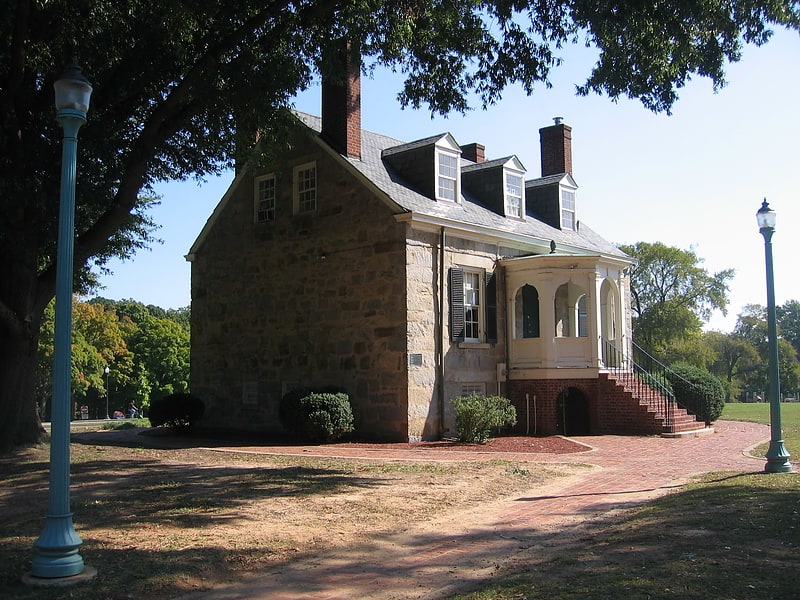
Amusement park in Richmond, Virginia. Forest Hill Park, known for its "Stone house" called Boscobel, is a popular and historic 105-acre urban park in Richmond, Virginia. Starting as a private property, the park has had several owners and uses before its present one, the City of Richmond.[11]
Address: 4021 Forest Hill Ave, 23225 Richmond (Westover Hills - Forest Hill Park)
Virginia Holocaust Museum

Powerful museum with free admission. The Virginia Holocaust Museum is a public history museum located in Richmond, Virginia, United States. The museum is dedicated to depicting the Holocaust through the personal stories of its victims.[12]
Address: 2000 E Cary St, 23223-7032 Richmond (Downtown Richmond)
Edgar Allan Poe Museum
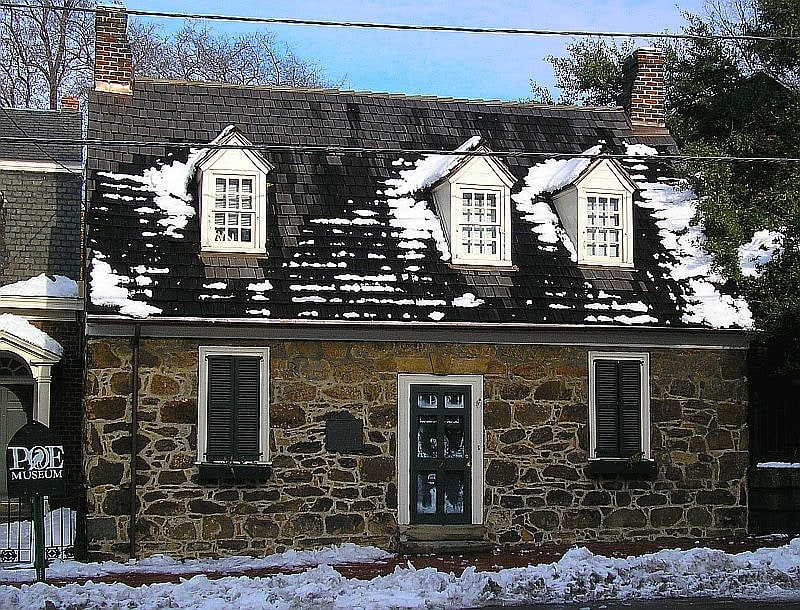
Photos, memorabilia and a Raven Room. The Poe Museum or the Edgar Allan Poe Museum, is a museum located in the Shockoe Bottom neighborhood of Richmond, Virginia, United States, dedicated to American writer Edgar Allan Poe. Though Poe never lived in the building, it serves to commemorate his time living in Richmond. The museum holds one of the world's largest collections of original manuscripts, letters, first editions, memorabilia and personal belongings. The museum also provides an overview of early 19th century Richmond, where Poe lived and worked. The museum features the life and career of Poe by documenting his accomplishments with pictures, relics, and verse, and focusing on his many years in Richmond.[13]
Address: 1914 E Main St, 23223-6964 Richmond (Downtown Richmond)
Byrd Theatre

Theater in Richmond, Virginia. The Byrd Theatre is a cinema in the Carytown neighborhood of Richmond, Virginia. It was named after William Byrd II, the founder of the city. The theater opened on December 24, 1928 to much excitement and is affectionately referred to as "Richmond’s Movie Palace". It was the first cinema in Virginia to be outfitted when built with a sound system.[14]
Address: 2908 W Cary St, 23221-3516 Richmond (Carytown - Museum District)
Science Museum of Virginia
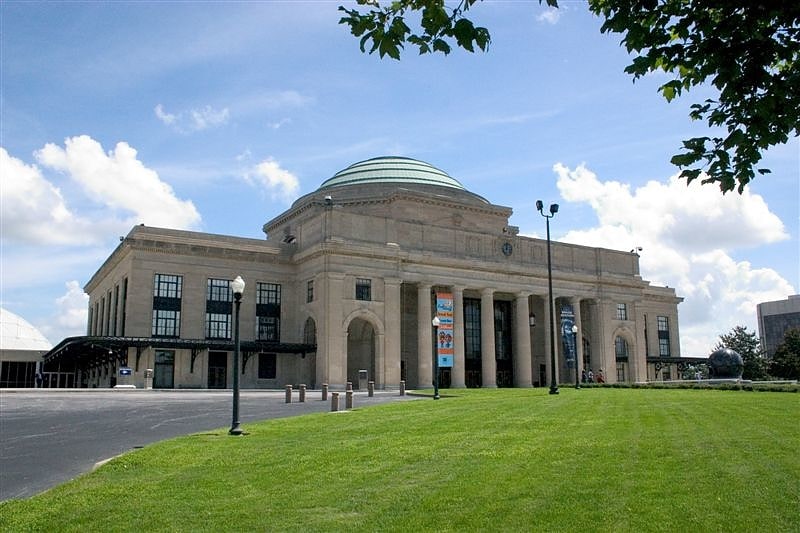
Museum in Richmond, Virginia. The Science Museum of Virginia is a science museum located in Richmond, Virginia. Established in 1970, it is an agency of the Commonwealth of Virginia. It is housed in the former Broad Street Station, built in 1917.[15]
Address: 2500 W Broad St, 23220 Richmond (Fan - Oregon Hill - Carver)
Virginia Washington Monument
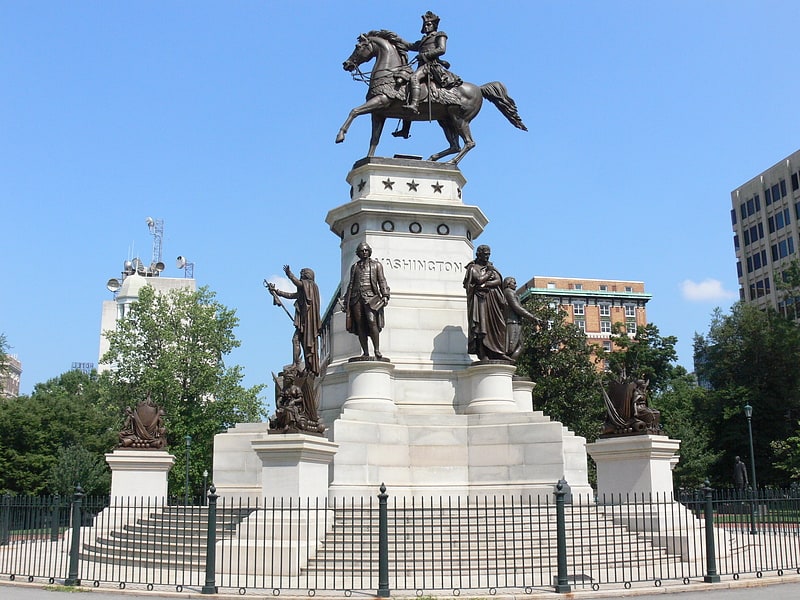
Historical landmark in Richmond, Virginia. The Virginia Washington Monument, also known as the Washington Monument, is a 19th-century neoclassical statue of George Washington located on the public square in Richmond, Virginia. It was designed by Thomas Crawford and completed under the supervision of Randolph Rogers after Crawford's death. It is the terminus for Grace Street. The cornerstone of the monument was laid in 1850 and it became the second equestrian statue of Washington to be unveiled in the United States. It was not completed until 1869.[16]
Children's Museum of Richmond
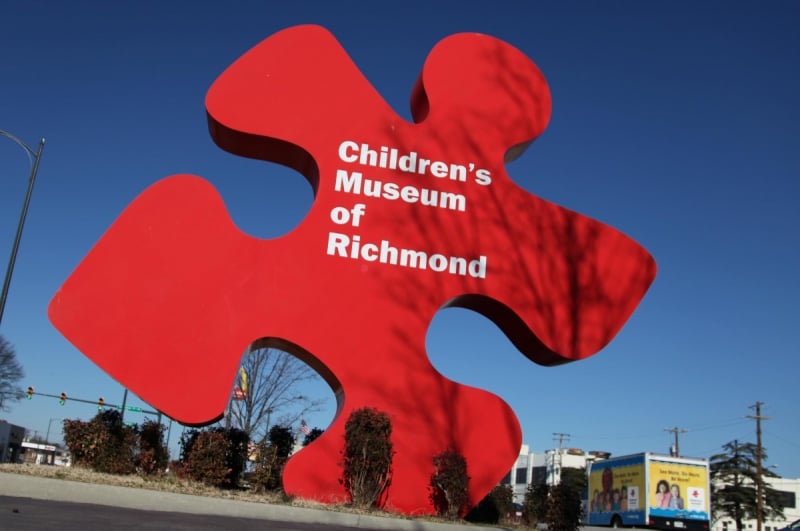
Museum in Richmond, Virginia. The Children's Museum of Richmond began in 1977 as the Richmond Children's Museum in the Navy Hill School building in downtown Richmond, Virginia. In 2000, the museum moved to its current location on Broad Street in Richmond. In 2010 The Children's Museum of Richmond became the first in the country to open a satellite location, in Short Pump, located in the West End of Richmond. The Children's Museum of Richmond opened two other satellites in 2012 and 2014 in Chesterfield, Virginia and Fredericksburg, Virginia. The museum is also home of Commonwealth Parenting and the Central Virginia Book Bank.
Highlights of Main Museum include:
- A newly renovated Hospital with a "'life size" operations game, x-ray center, ambulance dispatch center and an ambulance with interactive siren and lights.
- Little Farm, a special area for visitors age 3 and under, to explore!
Address: 2626 W Broad St, 23220-1904 Richmond (Fan - Oregon Hill - Carver)
Siegel Center

Arena in Richmond, Virginia. The Stuart C. Siegel Center is a 190,000-square-foot multi-purpose facility on the campus of Virginia Commonwealth University in Richmond, Virginia, United States. The facility's main component is the 7,637- seat E.J. Wade Arena. It also served as a student recreational area until 2010, when the new Cary Street Gym complex was completed. It now is used purely for VCU athletics and includes a weight room, auxiliary basketball court, and a cafè. The E.J. Wade Arena hosts Division I level NCAA inter-collegiate athletics and serves as a general-purpose assembly space for special events such as graduations, concerts, receptions, and a variety of competitions. It is named after Richmond businessman Stuart C. Siegel.
The complex opened in 1999 and cost $30.1 million to construct. $7 million of the cost was donated by local businessman Stuart C. Siegel; the center bears his name as a result. Its main tenant is the VCU Rams men's basketball team, which enjoys one of the nation's best home court winning percentages since moving into the facility. The court has received the reputation as arguably the toughest place to play in the Atlantic 10 Conference. The VCU Rams men's basketball team currently holds the 11th-highest home court winning percentage in Division I basketball with a winning percentage of 85.79 The student section, dubbed the "Rowdy Rams", is extremely passionate and near deafening during contests. In 2012-2013, the Rowdy Rams received the Naismith Student Section of the Year Award, recognizing the best student section in college basketball. Since January 2011, every home game at the Siegel Center has been sold out and the streak currently stands at 134 (as of 3/8/19). The arena also routinely hosts local and state high school basketball tournaments, in addition to hosting the annual Virginia Regional (formerly VCU/NASA) FIRST Robotics Competition.
Before the 2016-2017 basketball season, the arena was renamed the E.J. Wade Arena; a construction company owned by a local family in Mechanicsville, VA. The deal is for $2.75 million over ten years, but the Wade family has promised a total monetary donation of $4.05 million over those ten years.[18]
Address: 1200 W Broad St, 23284-9023 Richmond (Fan - Oregon Hill - Carver)
White House of the Confederacy
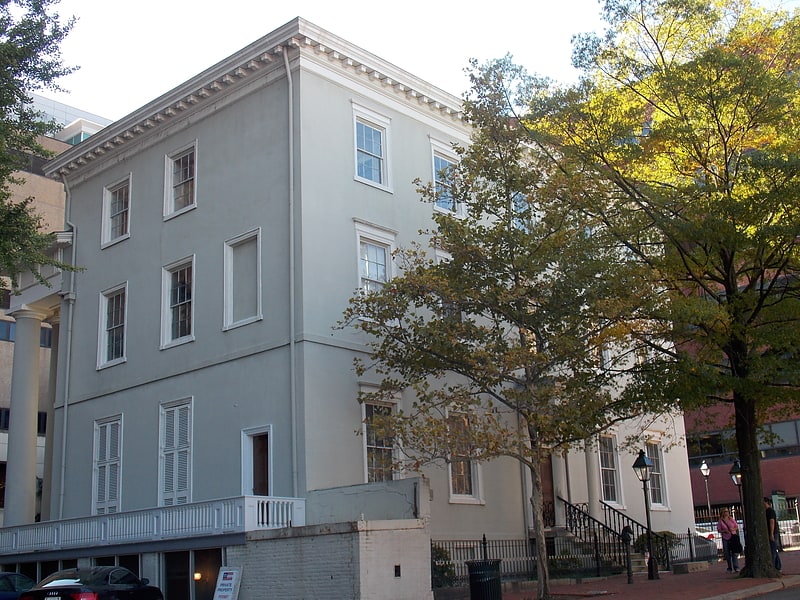
Museum in Richmond. The White House of the Confederacy is a historic house located in the Court End neighborhood of Richmond, Virginia. Built in 1818, it was the main executive residence of the sole President of the Confederate States of America, Jefferson Davis, from August 1861 until April 1865. It was viewed as the Confederate States counterpart to the White House in Washington, D.C.
The Jefferson Davis Executive Mansion was owned by the Confederate Memorial Literary Society from 1894 until 2014, when the Museum of the Confederacy merged with the American Civil War Center. The merged entity is now the American Civil War Museum. The house museum is known as the White House of the Confederacy. It was designated a National Historic Landmark in 1960.[19]
Address: 1201 E Clay St, 23219-1615 Richmond (Downtown Richmond)
Tredegar Iron Works
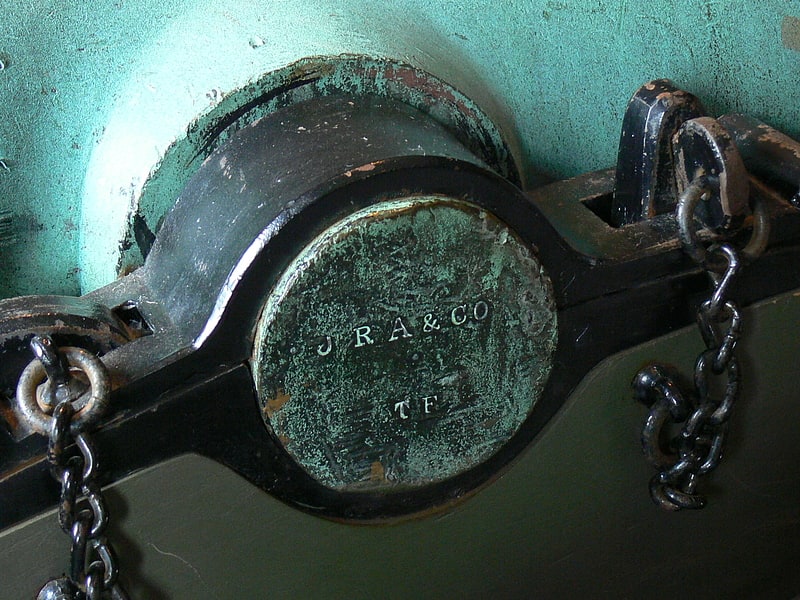
Museum. The Tredegar Iron Works in Richmond, Virginia, was the biggest ironworks in the Confederacy during the American Civil War, and a significant factor in the decision to make Richmond its capital.
Tredegar supplied about half the artillery used by the Confederate States Army, as well as the iron plating for CSS Virginia, the first Confederate ironclad warship, which fought in the historic Battle of Hampton Roads in March 1862. The works avoided destruction by troops during the evacuation of the city, and continued production through the mid-20th century. Now classified as a National Historic Landmark District, the site serves as the main building of the American Civil War Museum.
The name Tredegar derives from the Welsh industrial town that supplied much of the company's early workforce.[20]
Address: 500 Tredegar St, 23219 Richmond (Downtown Richmond)
James Monroe Tomb
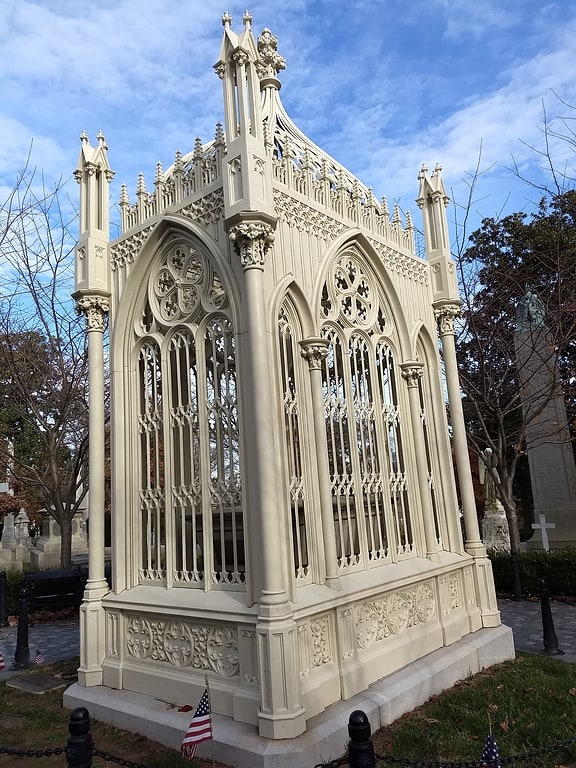
Monument in Richmond, Virginia. The James Monroe Tomb is the burial place of U.S. President James Monroe in Hollywood Cemetery, Richmond, Virginia, United States. The principal feature of the tomb is an architecturally unusual cast iron cage, designed by Albert Lybrock and installed in 1859 after Monroe's body was moved from Marble Cemetery in New York City. The tomb was declared a National Historic Landmark in 1971 for its unique architecture. To Richmonders it is colloquially known as The Birdcage.[21]
Virginia House
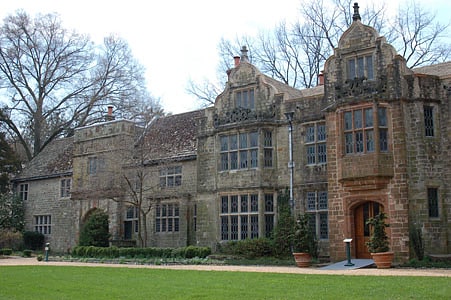
Museum in Richmond, Virginia. Virginia House is a manor house on a hillside overlooking the James River in the Windsor Farms neighborhood of Richmond, Virginia, United States.
The house was constructed from the materials of the 16th-century Priory House, Warwick in Warwickshire, England, and shipped over and reassembled, completed several months before the stock market crash of 1929. Virginia House is in the Tudor architectural style but incorporates a range of designs from other English houses and has modern facilities such as ten baths and central heating.
Virginia House was built by Alexander and Virginia Weddell, salvaging many materials from the Priory and other old English manor houses and adding further elegant English and Spanish antiques, oriental carpets, silks, and silver. Today Virginia House is operated by the Virginia Historical Society as a house museum, although it largely remains as it was in the 1940s during the Weddells’ tenancy. Immediately to the west of the property is Agecroft Hall.[22]
Address: 4301 Sulgrave Rd, 23221 Richmond (Near West End)
Altria Theater
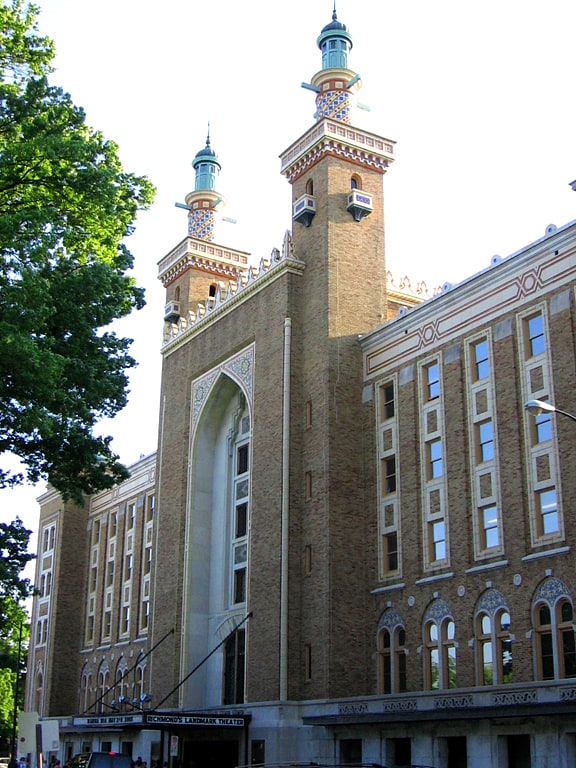
Theater in Richmond, Virginia. The Altria Theater in Richmond, Virginia, United States is a theater at the southwest corner of Monroe Park on the campus of Virginia Commonwealth University, and is the largest venue of Richmond CenterStage's performing arts complex. Formerly known as The Mosque and the Landmark Theater, the Altria Theater was originally built for Shriners of the Acca Temple Shrine.
In 1940, the building was purchased by the City of Richmond, which converted much of its interior for municipal use. The Richmond Police Department occupied the theater's basement, where they opened up office space, classrooms, a gymnasium, and a shooting range for the police academy. An underground swimming pool was also maintained, initially for training purposes, until it was filled in with concrete during the 2014 renovation. Many are familiar with the basement of the Mosque as the location for VCU class registration, which occurred several times each year.
The name of the theater was changed in 1995 from "The Mosque" to "Landmark Theater" following a year of restoration. After a $10 million renovation gift from the company, the theater was officially dubbed the Altria Theater in February 2014. It annually plays host to big-name musical and theatrical performers.
The theater was designed in Moorish Revival style by Marcellus E. Wright Sr. in association with Charles M. Robinson and Charles Custer Robinson circa 1925. J. R. Ray, of the Richmond Tile and Mosaic Works, was responsible for the widely used ornamental tile, and J. Frank Jones, of the Rambusch Decorating Company, oversaw the interior decoration. The building officially opened in 1927, and was dedicated by the Shriners in 1928.
Performers such as Elvis Presley, Jimi Hendrix, Bill Burr, Grateful Dead, Bruce Springsteen, Frank Sinatra, Roy Buchanan, B B King, Widespread Panic and The Supremes held shows at this venue. Notable Broadway performances such as Wicked, The Lion King, Les Miserables, and Cats have also been past visitors of The Altria Theater.[23]
Address: Richmond, 6 N Laurel St, Richmond, VA 23220-4700
Virginia Aviation Museum
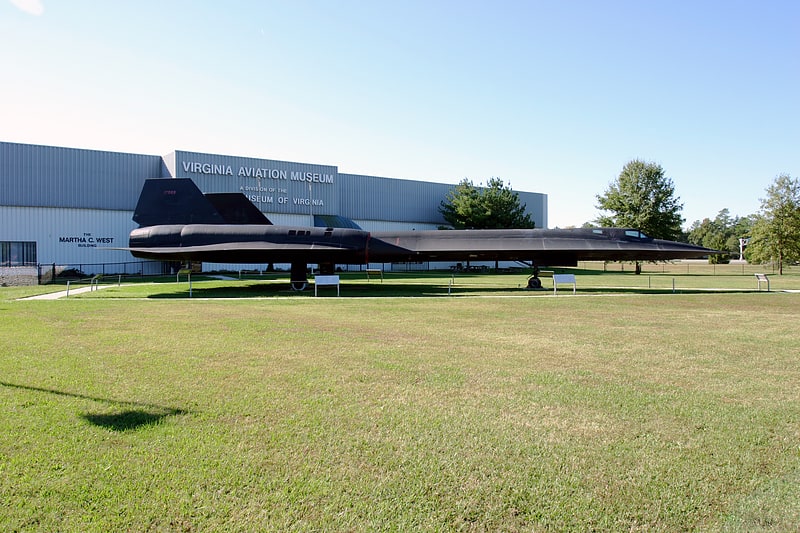
Museum in Sandston, Virginia. The Virginia Aviation Museum was an aviation museum in unincorporated Henrico County, Virginia, adjacent to Richmond International Airport. Erected in 1986, the museum housed a collection of some thirty-four airframes, both owned and on-loan, ranging from reproductions of Wright Brothers kite gliders to the still state-of-the-art SR-71 Blackbird. It is a subsidiary of the Science Museum of Virginia. The current building, known as the Martha C. West Building, was originally planned to be a temporary storage facility until the actual museum building finished construction.
The museum closed June 30, 2016. The SR-71 was moved to the Science Museum of Virginia where it is on display. The remainder of the collection will be relocated and preserved, though a new location has yet be determined.[24]
Address: 5701 Huntsman Rd, 23250-2416 Richmond
Monroe Park
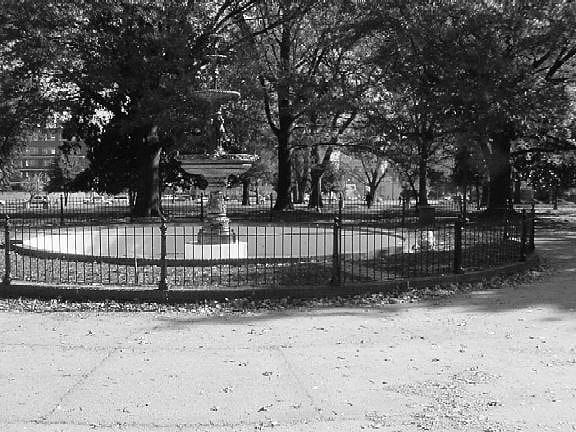
Park in Richmond, Virginia. Monroe Park is a 7.5 acres landscaped park 1 mile northwest of the Virginia State Capitol Building in Richmond, Virginia. It is named after James Monroe, the fifth President of the United States. The park unofficially demarcates the eastern point of the Fan District and is Richmond's oldest park.[25]
Address: 520 W Franklin St, 23220 Richmond (Fan - Oregon Hill - Carver)
Virginia Historical Society
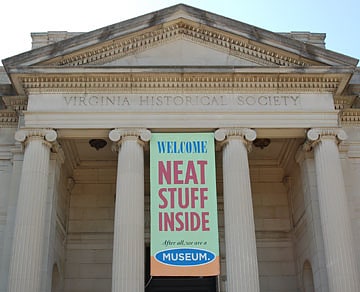
Museum in Richmond, Virginia. The Virginia Historical Society, founded in 1831 as the Virginia Historical and Philosophical Society and headquartered in Richmond, Virginia, is a major repository, research, and teaching center for Virginia history. It is a private, non-profit organization, supported almost entirely by private contributions. In 2004, it was designated the official state historical society of the Commonwealth of Virginia.
The historical society's headquarters was renamed as the Virginia Museum of History and Culture in 2018.
The museum features exhibitions and programming for visitors of all ages and has more than 25,000 square feet (2,300 m2) of exhibition gallery space and the largest display of Virginia artifacts on permanent view. The Virginia Museum of History & Culture is the only museum with all of Virginia's history under one roof—all centuries, regions, and topics are covered.[26]
Address: 428 N Boulevard, 23220 Richmond (Carytown - Museum District)
Branch House
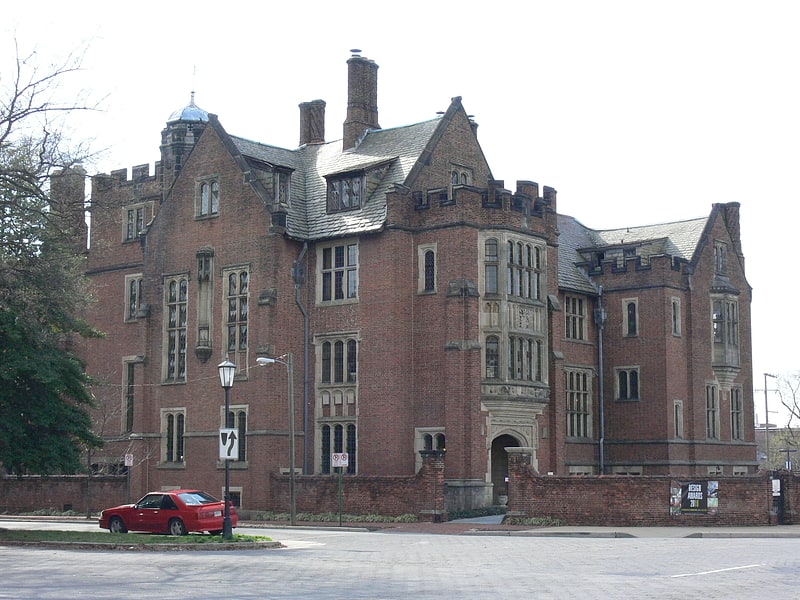
Building. Branch House in Richmond, Virginia, was designed in 1916 by the firm of John Russell Pope as a private residence of financier John Kerr Branch and his wife Beulah Gould Branch.
The house lies within Richmond's Monument Avenue Historic District, which was listed on the National Register of Historic Places in 1967. Branch House itself was listed on the National Register of Historic Places in 1984. The district's status was extended in 1989 and subsequently upgraded to a National Historic Landmark in 1997.
After a Branch family heir gifted the home to a local charity in the 1950s, the house changed ownership several times until it was purchased in 2003 by the Virginia Architecture Foundation (formerly the Virginia Center for Architecture Foundation) and reopened in 2005 as headquarters of its successor, the Virginia Center for Architecture (VCA), offices for the Virginia Society of the American Institute of Architects (VSAIA) and its now defunct publication, Inform magazine. The building also houses the Branch Museum of Architecture and Design.[27]
Address: 2501 Monument Ave, 23220-2618 Richmond (Fan - Oregon Hill - Carver)
The National
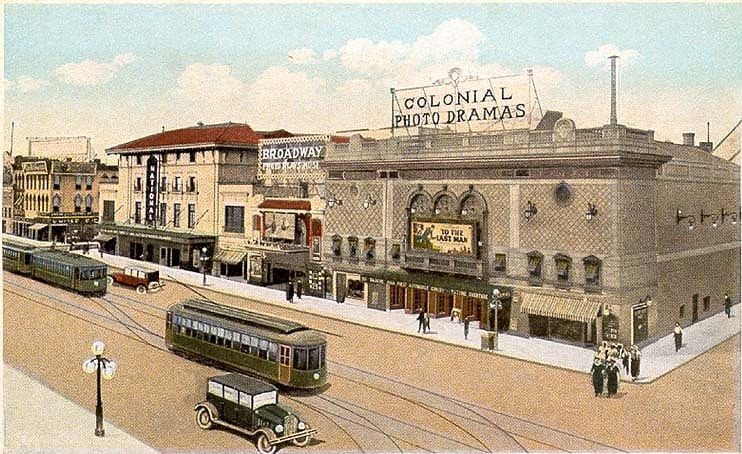
Theater in Richmond, Virginia. The National Theater is a historic theater in Richmond, Virginia. Part of a city block along the 700 block of Broad Street once known as Theatre Row, it is the only surviving auditorium of the row.
The National Theater was built in 1923, originally staging both live entertainment (such as vaudeville shows) as well as motion-pictures. In 1968, it was converted into a dedicated cinema, which closed on September 5, 1983.
Restored and reopened in 2008 by RIC Capital Ventures, the theater, operating as The National, is used as a performing arts and music venue. In 2014, the venue was acquired by AEG Live.
It was added to the National Register of Historic Places in 2003 and is located in the Grace Street Commercial Historic District.[28]
Address: Richmond, 708 E Broad St
Virginia War Memorial
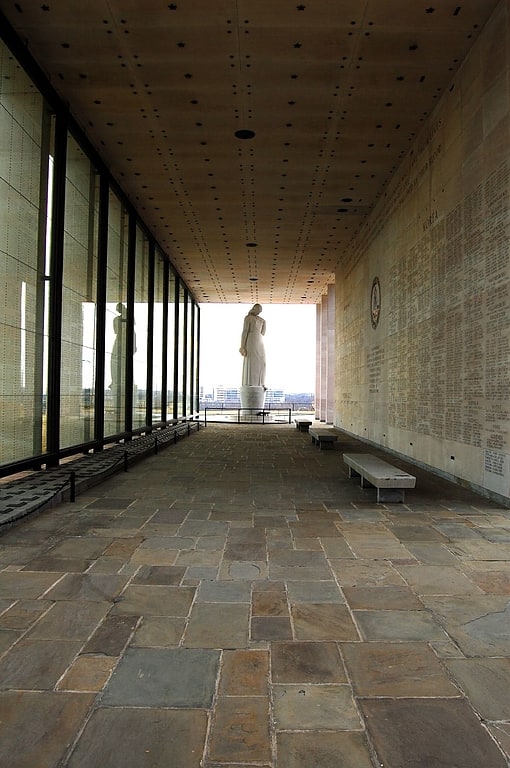
War memorial in Richmond, Virginia. The Virginia War Memorial is a 1955 memorial in Richmond, Virginia, originally dedicated to Virginians killed in World War II and the Korean War. In 1980, the Shrine was enlarged to honor those Virginians killed in action in the Vietnam War. In 1996, the names of Virginians killed in action during Desert Storm/Desert Shield were added. Today, there are nearly 12,000 Virginians whose names are engraved on the Shrine of Memory's glass and stone walls. Reflecting the different character of war today, Virginia has created a special Memorial Shrine to honor the over 250 Virginians killed in the Global War on Terrorism.
The Virginians at War documentary video series, combined with other efforts, significantly increased the War Memorial's public image in the local region and throughout the Commonwealth, and highlighted the message of the "Price of Freedom". The Memorial added staff and volunteers to meet the increasing demand for its educational offerings and to assist with increased visitors to the Memorial.
With over 21,000 people from 45 states and 21 countries visiting the War Memorial in 2008, the facilities were stretched to the breaking point. Some groups would be turned away and individual visitors could not be provided educational support because the single auditorium could not support multiple groups for education and meetings. The Memorial is also used by active military personnel for events such as homecomings, re-enlistments, and promotions.
To alleviate the increasing demand on the facilities, an education center was planned to expand the educational opportunities and outreach for students and visitors, and to provide adequate visitor services. A bold design was created to add an 18,000 square foot education center that would provide the needed space to accommodate multiple groups for educational and patriotic programs as well as the casual tourist who is exploring one of Virginia's treasures.[29]
Address: 621 S Belvidere St, 23220-6504 Richmond (Downtown Richmond)
St. John's Episcopal Church
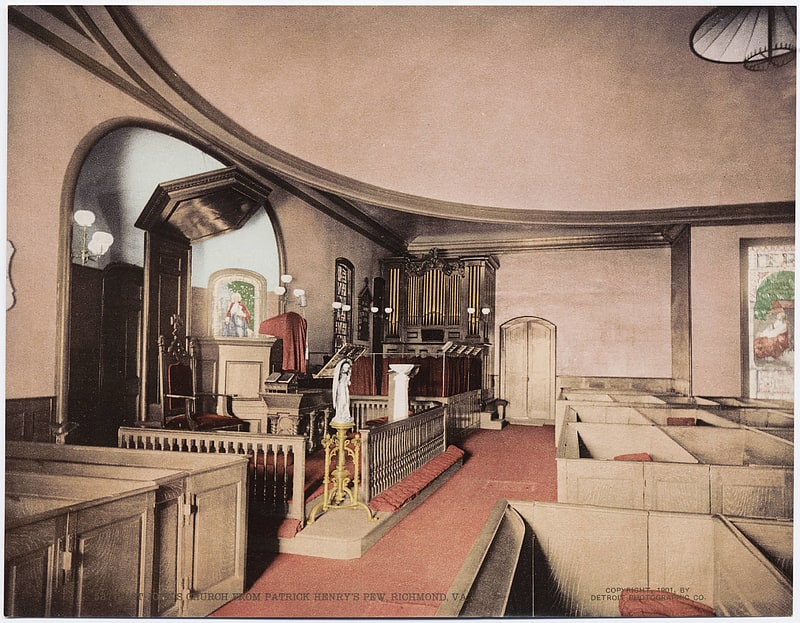
Historic place with costumed tour guides. St. John's Church is an Episcopal church located at 2401 East Broad Street in Richmond, Virginia, United States. Formed from several earlier parishes, St. John's is the oldest church in the city of Richmond, Virginia. It was built in 1741 by William Randolph's son, Colonel Richard Randolph; the Church Hill district was named for it. It was the site of two important conventions in the period leading to the American Revolutionary War, and is famous as the location where American Founding Father Patrick Henry gave his memorable speech at the Second Virginia Convention, closing with the often-quoted demand, "Give me liberty, or give me death!" The church is designated as a National Historic Landmark.[30]
Address: 2401 E Broad St, 23223 Richmond
Virginia Women's Monument
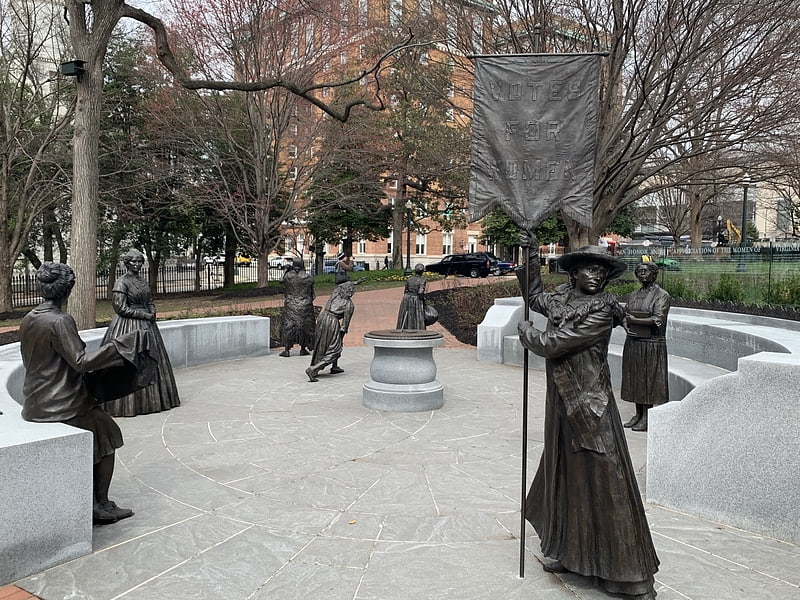
The Virginia Women's Monument is a state memorial in Richmond, Virginia commemorating the contributions of Virginia women to the history of the Commonwealth of Virginia and the United States of America. Located on the grounds of the Virginia State Capitol, the monument is officially titled Voices from the Garden: The Virginia Women's Monument and features life-sized bronze statues of seven Virginia women placed in a small granite plaza.
The monument was first proposed in 2009 and established by joint resolution of the Virginia General Assembly in 2010. An 18-member commission, along with input from the Library of Virginia and professors of women's history, selected the women to be honored with statues sculpted by StudioEIS in Brooklyn, New York. The granite plaza and Wall of Honor were opened in October 2018 and the monument was officially unveiled with the first seven completed statues on October 14, 2019.
The women currently featured include Cockacoeske, chieftain of the Pamunkey tribe; Anne Burras Laydon, Jamestown colonist; Mary Draper Ingles, famed frontierswoman and American pioneer; Elizabeth Keckley, seamstress and confidant of Mary Todd Lincoln; Laura Copenhaver, entrepreneur; Virginia Randolph, prominent educator; Adele Goodman Clark, suffragist and activist; Martha Washington,inaugural first lady of the United States; and Clementina Rind the first female newspaper printer and publisher in Virginia.[31]
Wilton House Museum
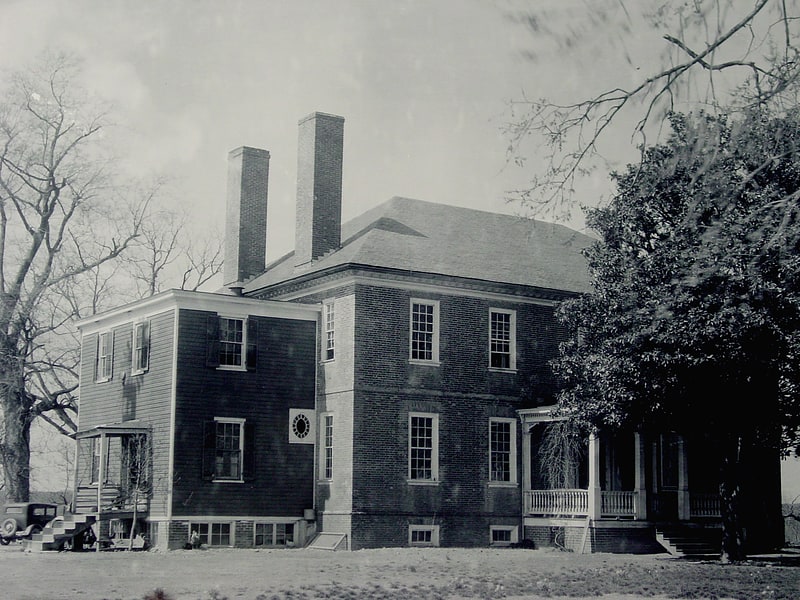
Museum in Richmond, Virginia. Wilton House Museum is a museum in a historic house located in Richmond, Virginia. Wilton was constructed c. 1753 by William Randolph III, son of William Randolph II, of Turkey Island. Wilton was originally the manor house on a 2,000-acre tobacco plantation known as "World's End" located on the north bank of the James River several miles east of the city of Richmond. Between 1747 and 1759, William III acquired more than a dozen contiguous tracts of land. About 1753, Randolph completed building a Georgian manor house, which he named "Wilton," on a site overlooking the river.
In 1934, with commercial development encroaching on the opposite bank of the James and the property in danger of foreclosure, The National Society of The Colonial Dames of America in the Commonwealth of Virginia saved the mansion from destruction by purchasing, dismantling, moving, and rebuilding it on a site overlooking the James River a few miles west of its original location. Ironically the farm just east of the Pocahontas Parkway, where Wilton once stood remains devoted to agriculture in the 21st century.
Open to the public since 1952, Wilton hosts a collection of 18th- and 19th-century furnishings, textiles, glass, ceramics, and silver that reflect the wealthy planter life of the mid-18th century.
The house was listed on the National Register of Historic Places in 1976.[32]
Address: 215 S Wilton Rd, 23226-2212 Richmond (Near West End)
Meadow Farm
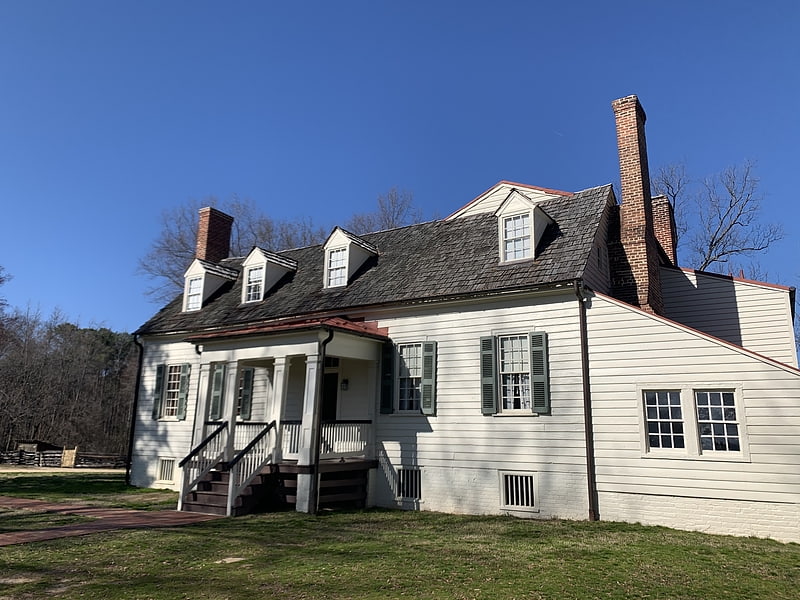
Meadow Farm is a historic farm and estate in Henrico County, Virginia. It is best known for its role in Gabriel's Revolution. The main farmhouse was built in the early nineteenth century and is a well preserved example of small Virginia farms of the time. It was listed in the National Register of Historic Places in 1974. The property is now owned and operated by Henrico County as the Meadow Farm Museum.[33]
WTVR TV Tower

Tower in Richmond, Virginia. The WTVR TV Tower is 257 m tall a free-standing lattice tower with a square cross section in Richmond, Virginia.[34]
Address: 3301 West Broad Street, Richmond (Carytown - Museum District)
St. Paul's Episcopal Church

Episcopal church in Richmond, Virginia. St. Paul's Episcopal Church is an historic Episcopal church in Richmond, Virginia, United States. Located directly across the street from the Virginia State Capitol, it has long been a popular house of worship for political figures, including General Robert E. Lee and Confederate President Jefferson Davis. Davis was a member.
Other notable people associated with the church are Rev. Dr. Charles Minnigerode, who led the church during the Civil War and Reconstruction eras. The Right. Rev. John Shelby Spong, now retired as bishop of the Diocese of Newark, began to attract national attention while rector of St. Paul's (1969–1976).
St. Paul's was built in 1845 as a branch of the Monumental Church, which had outgrown its building. The Greek Revival church was designed by Thomas Somerville Stewart and modeled largely on St. Luke's Church, now Church of St. Luke & the Epiphany, in Philadelphia. It was listed on the National Register of Historic Places in 1969 as St. Paul's Church.
The corner stone was laid on 10-Oct-1843 according to the St. Paul's History book. Consecration was 11-Nov-1845.
The same book estimates the probable cost, before construction, as "not exceeding $53,500". That excludes the organ and lot. Later an approximation of $55,000 is given. Organ is estimated at $4,000 and lot was $6,000 and then an additional lot was added for $1,075. The book also reports that there were 804 sittings in the nave and 358 in the gallery for a total of 1162.[35]
Address: 815 E Grace St, 23219-3409 Richmond (Downtown Richmond)